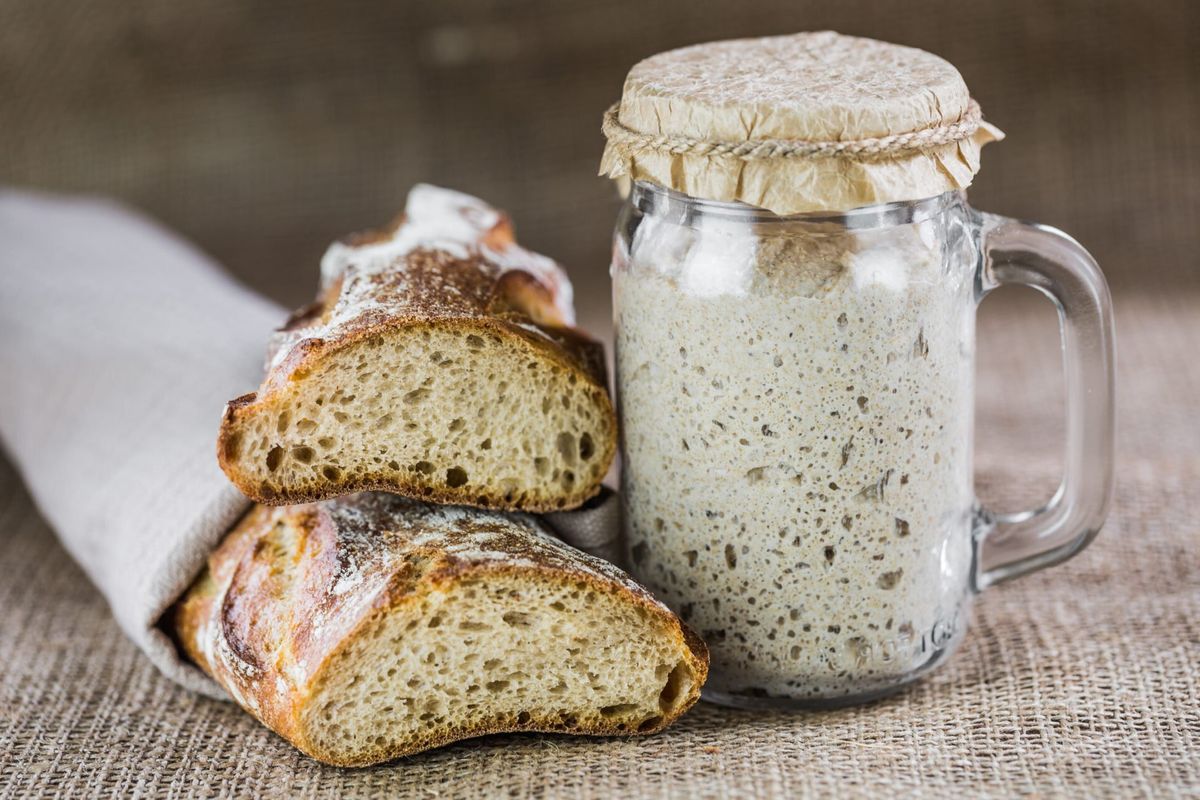Creating a rye starter is the first step in making delicious homemade sourdough bread. This simple mixture of rye flour and water will capture wild yeast from the environment, giving your bread a unique flavor and texture. With just a little patience, you'll have a living, bubbling starter ready to use in your baking adventures.
The key ingredient in this recipe is rye flour. While water is a common household item, rye flour might not be as readily available in every pantry. When heading to the supermarket, look for rye flour in the baking aisle, often near other specialty flours. It's essential for creating the distinct flavor and texture of your rye starter.

Ingredients For Rye Starter Recipe
Rye flour: A type of flour made from rye grain, essential for creating the unique flavor and texture of the starter.
Water: Room temperature water is used to hydrate the flour and activate the wild yeast.
Technique Tip for Rye Starter
When mixing the rye flour and water, ensure there are no dry clumps left in the mixture. A smooth, consistent texture will help the starter develop evenly. Use a wooden spoon or a silicone spatula to combine the ingredients thoroughly.
Suggested Side Dishes
Alternative Ingredients
rye flour - Substitute with whole wheat flour: Whole wheat flour has a similar texture and nutritional profile, making it a suitable alternative for a starter.
rye flour - Substitute with spelt flour: Spelt flour has a slightly nutty flavor and can mimic the taste and texture of rye flour in a starter.
room temperature water - Substitute with filtered water: Filtered water ensures that no impurities or chlorine affect the fermentation process of the starter.
room temperature water - Substitute with spring water: Spring water is free from chemicals and additives, providing a clean environment for the starter to develop.
Other Alternative Recipes Similar to Rye Starter
How to Store / Freeze Your Rye Starter
- To store your rye starter at room temperature, keep it in a clean jar with a loose-fitting lid. Feed it daily with equal parts rye flour and water to maintain its activity.
- For refrigeration, transfer your active rye starter to a jar with a tight-fitting lid. Feed it once a week with equal parts rye flour and water. Before using, bring it to room temperature and feed it 8-12 hours prior.
- To freeze your rye starter, place it in an airtight container. Label it with the date. When ready to use, thaw it in the refrigerator overnight, then bring it to room temperature and feed it with equal parts rye flour and water. Allow it to become active again before baking.
- For long-term storage, dry your rye starter by spreading a thin layer on parchment paper. Once completely dry, break it into pieces and store in an airtight container. To reactivate, soak the dried pieces in water until dissolved, then feed with equal parts rye flour and water.
How to Reheat Leftovers
- Preheat your oven to 350°F (175°C). Place the rye starter in an oven-safe dish, cover with aluminum foil, and heat for about 10-15 minutes until warmed through.
- For a quicker method, use a microwave. Transfer the rye starter to a microwave-safe bowl, cover with a microwave-safe lid or plate, and heat on medium power for 1-2 minutes, stirring halfway through.
- If you prefer a stovetop method, place the rye starter in a small saucepan over low heat. Stir continuously until it reaches your desired temperature, being careful not to let it stick to the pan.
- To maintain the texture and avoid drying out, you can use a double boiler. Place the rye starter in a heatproof bowl and set it over a pot of simmering water. Stir occasionally until warmed through.
Best Tools for Making Rye Starter
Mixing bowl: This is where you will combine the rye flour and water to create your starter. It should be large enough to allow the mixture to expand.
Cloth: Use this to cover the mixing bowl. It allows the starter to breathe while keeping out dust and insects.
Spoon: A spoon is essential for stirring the rye flour and water until they are well mixed.
Measuring cup: This will help you accurately measure 100 ml of water.
Kitchen scale: Use this to weigh 100 g of rye flour to ensure precise measurements.
How to Save Time on Making Rye Starter
Use warm water: Warm water can speed up the activation process of your starter.
Pre-measure ingredients: Have your rye flour and water pre-measured to save time.
Mix thoroughly: Ensure the flour and water are well combined to activate faster.
Use a warm spot: Place the starter in a warm area to encourage quicker fermentation.
Check frequently: Check for bubbles every 12 hours instead of 24 to catch early activation.

Rye Starter Recipe
Ingredients
Starter Ingredients
- 100 g Rye flour
- 100 ml Water Room temperature
Instructions
- 1. In a mixing bowl, combine the rye flour and water. Stir until well mixed.
- 2. Cover the bowl with a cloth and let it sit at room temperature for 24 hours.
- 3. After 24 hours, check for bubbles. If bubbles are present, your starter is active. If not, let it sit for another 24 hours.
Nutritional Value
Keywords
More Amazing Recipes to Try 🙂
- Focaccia Alla Genovese Recipe45 Minutes
- Tea Biscuits Recipe27 Minutes
- Zucchini Walnut Bread Recipe1 Hours 15 Minutes
- Hawaiian Banana Nut Bread Recipe1 Hours 15 Minutes
- Polish Egg Bread Recipe50 Minutes
- Pumpkin Shaped Dinner Rolls Recipe50 Minutes
- Tsoureki Greek Easter Bread Recipe2 Minutes
- Irish Wheaten Bread Recipe55 Minutes

Leave a Reply